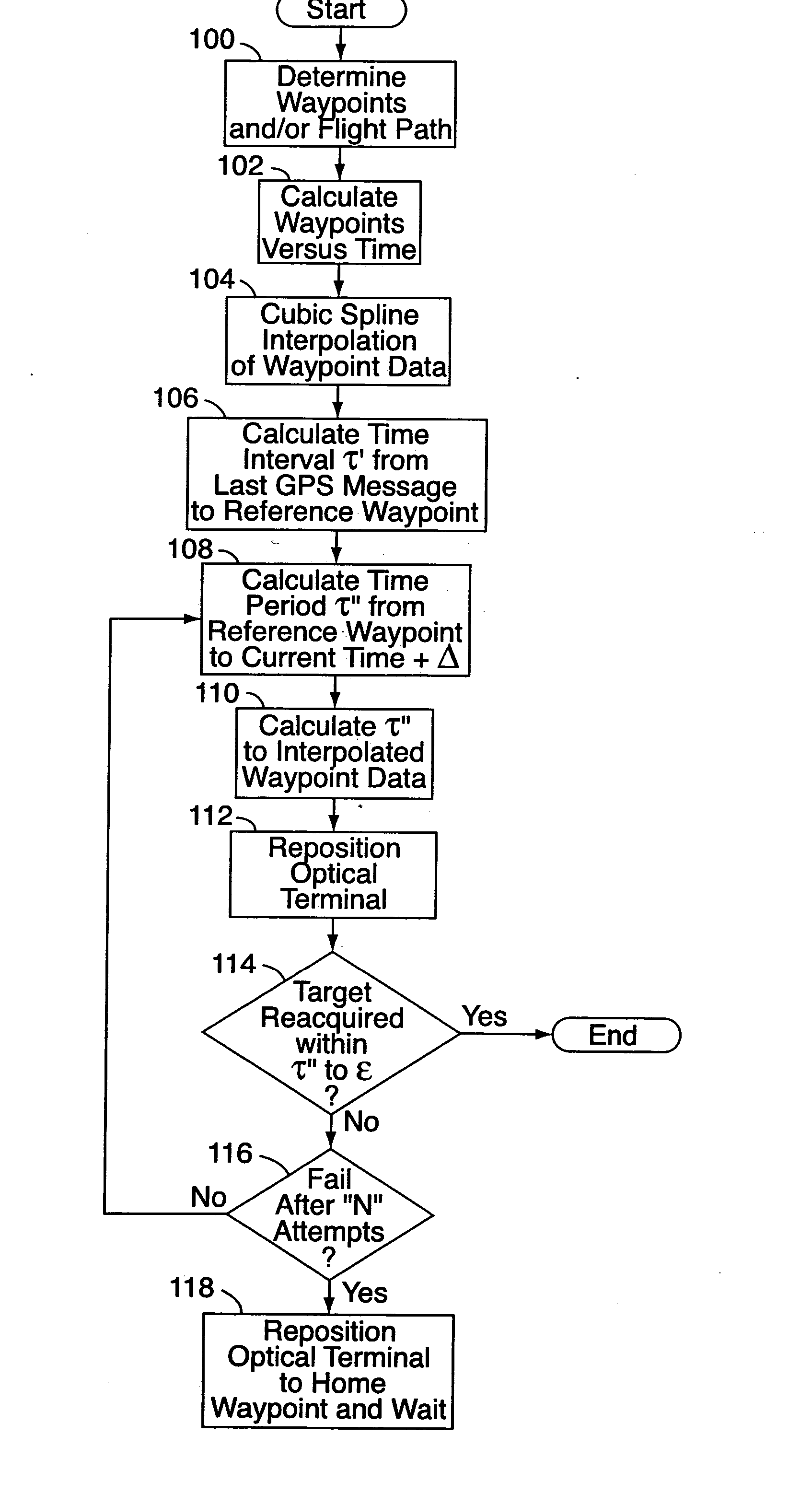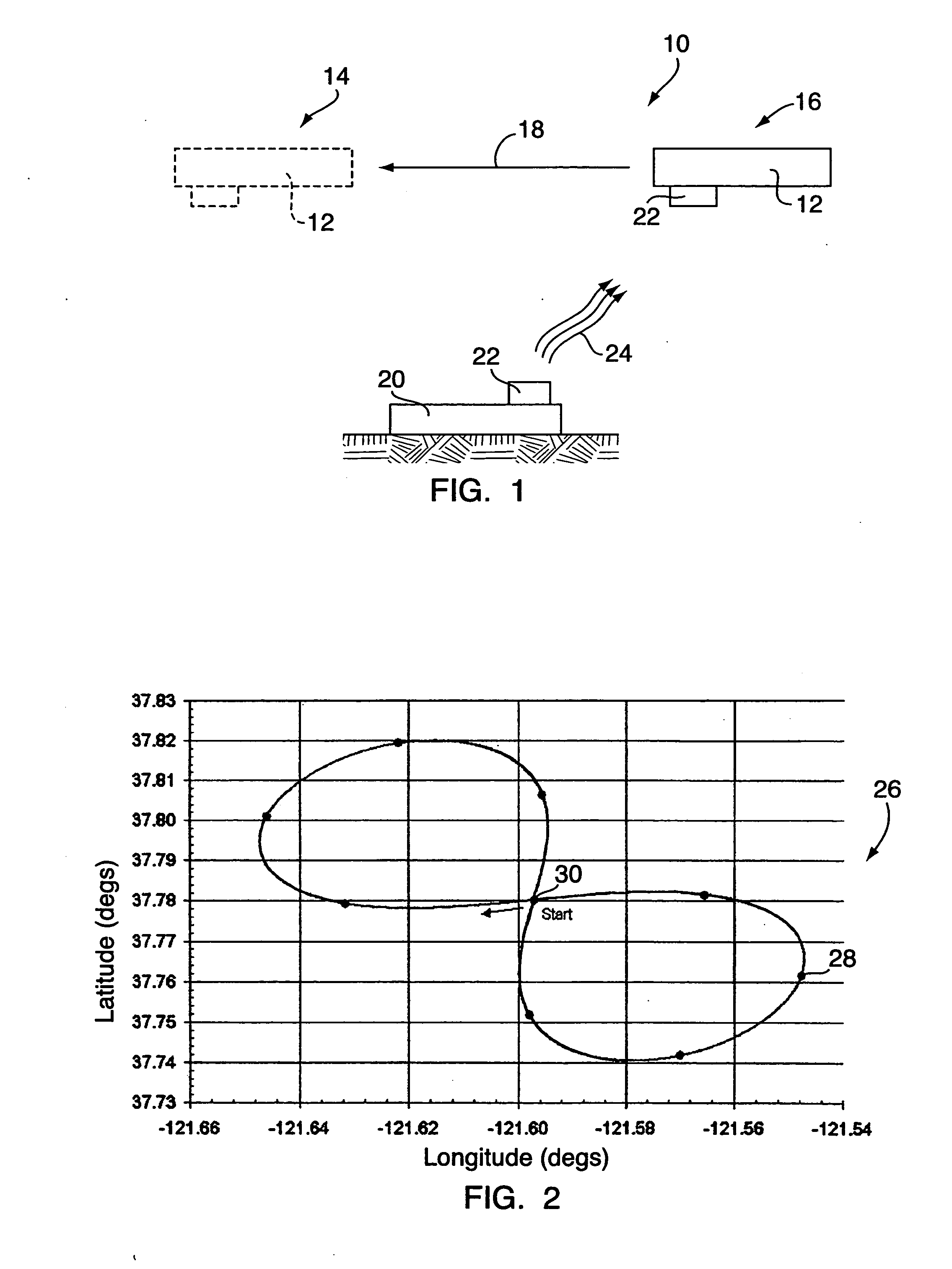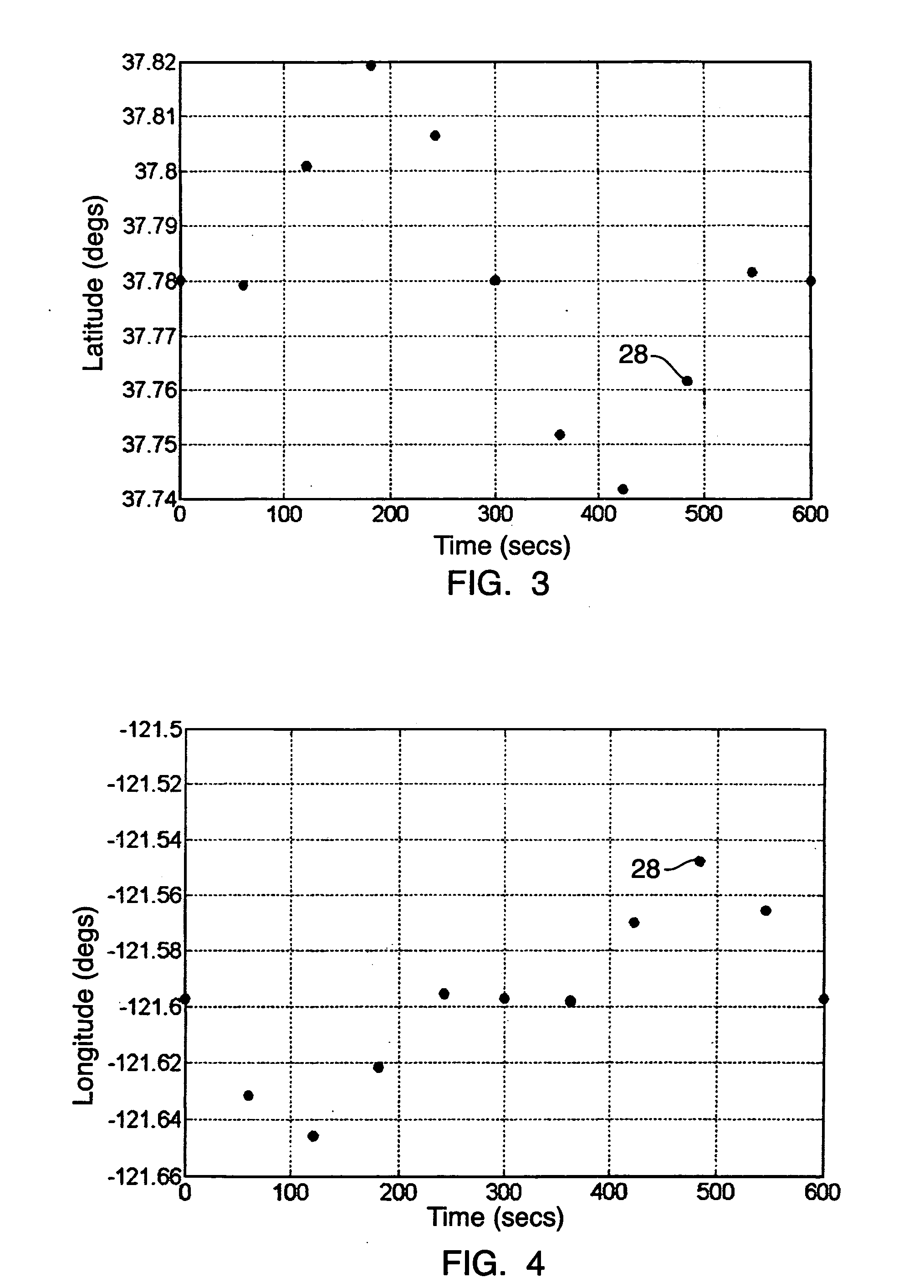Method and system for tracking a moving station or target in free space communications
- Summary
- Abstract
- Description
- Claims
- Application Information
AI Technical Summary
Benefits of technology
Problems solved by technology
Method used
Image
Examples
Embodiment Construction
[0017] With reference to FIGS. 1-9, an embodiment of the present invention relates to a method and system 10 for tracking a moving station or target 12 for carrying out free space optical communications. The system 10 uses an “elapsed time”-based approach to determine the position 14 of the moving station 12 at any future point in time, based on the time difference since the moving station's 12 last known position 16. A mathematical model of the expected path 18 of the moving station 12 is used, which, when combined with the last known position 16 and time elements, can accurately predict the future position 14 of the moving station 12.
[0018] The tracking system 10 will most typically be used in the context of free space optical communications between first and second remote stations, e.g., the moving station or target 12 and a stationary ground station 20. Typically, the moving station 12 will be, for example, an unmanned aerial vehicle (“UAV”) that travels generally along a desig...
PUM
 Login to View More
Login to View More Abstract
Description
Claims
Application Information
 Login to View More
Login to View More - R&D
- Intellectual Property
- Life Sciences
- Materials
- Tech Scout
- Unparalleled Data Quality
- Higher Quality Content
- 60% Fewer Hallucinations
Browse by: Latest US Patents, China's latest patents, Technical Efficacy Thesaurus, Application Domain, Technology Topic, Popular Technical Reports.
© 2025 PatSnap. All rights reserved.Legal|Privacy policy|Modern Slavery Act Transparency Statement|Sitemap|About US| Contact US: help@patsnap.com



